28 September 2017
The Oromo Resolve to Fight the Trauma of State Terrorism
By Mekuria Bulcha, PhD, Professor
Although the Oromo have been exposed to series of violent acts perpetrated against them by the Ethiopian security during the past twenty-six years, the Irreecha massacre of October 2, 2016 stands out as one of the most traumatic events. It was an act that had affected the largest number of Oromos in one place and day. The incident shocked and infuriated millions of Oromos irrespective where they were at that moment. Reports from those who participated in the festival through FaceBook and video footages which were transmitted on the occasion show that the 2016 Irreecha parade started with the mood of festivity that characterized the event as in the past. The mood, however, suddenly turned ugly when the regime used the festival for its political agenda and provoked the participants to protest. The subsequent onslaught by security forces transformed the festive mood of millions of men, women, and children into terror and helplessness (four million, according to the regime itself). As one journalist and survivor put it, “The scene was horrific and unbearable. Many who saw the belongings of their loved ones being scattered on the field were crying and running towards the ditch.” As blankets of teargas cloud covered parts of the festival grounds, participants ran in different directions and thousands of them were pushed into the bush where, hidden from their sight a netherworld, which like the Biblical Hades[1] had opened its mouth wide, was waiting to swallow them. The journalist mentioned above wrote, “By the time I reached at the ditches, hundreds have already lost their lives and many more were still trapped in the ditches, covered up by the soil.” All of a sudden the sacred thanksgiving site around Lake Arsadee was transformed into a valley of death.
An American psychologist wrote that “Just watching television footage of the terrorist attack of September 11, 2001, was enough to cause clinically diagnosable stress responses [shock] in some people who did not even live near the attacks – let alone the millions of people who did.”[2] According to another scholar, the social-psychologist Neil Smelser, “there was an instant consensus that the [9/11] attack was a trauma for everybody” and that there “was no significant divergence in the reactions of government and community leaders, the media, and the public in assigning meaning to the events as a national tragedy and outrage.”[3]Although the settings in which the two tragedies occurred are different, there are parallels between the trauma and anger felt by the Oromo in the aftermath of the crackdown on the Irreecha festival and the reactions and responses of the American public and government to the 9/11 attack. The initial Oromo reaction to the Irreecha massacre was a mixture of shock, grief, and collective anger. Ayantu Ayana who was at the festival tells us what she had witnessed and how she felt. She wrote,
Hora Arsadi is sacred ground. Irreecha is sacred. I keep asking myself how dare they kill [our people] on sacred ground on a Sacred day? How dare they? All those people muddied and bloodied in their beautiful and colorful clothes. All those lives lost. Should mourning be all we do these days? When I talk to friends and family, they are in mourning, but even more in absolute rage (emphasis mine).[4]
In many places in Oromia, the funerals of hundreds of victims were occasions, not only for the expression of collective mourning, but also manifestations of collective anger against the regime. Video clips that circulated on social media show that the mourners were not only the families, relatives, or neighbors of the victims of the tragedy, but inhabitants of the entire towns and districts.
In the diaspora, those who watched the festival online, or had seen video footages, shared the feelings described in the quote above. The immediate response to the tragedy was an expression of collective mourning the like of which was not seen before among the Oromo. Emotion-filled prayers were conducted and candle vigils were lit by hundreds of Oromos and others in many community centers and churches across the globe to pray for and honor those who were massacred in the incident. Many communities staged protests and demanded immediate and thorough investigation of the incident and punishment of the perpetrators.
Caught by masses of smartphone cameras and transmitted audio-visually online in real time, the feeling of the impunity the TPLF forces who attacked, dispersed celebrants of the festival, or caused the death of hundreds of innocent people, gave millions of Oromos a lingering chilling shock. Consequently, still today, there are many men and women who cannot hold back their tears whenever the Irreecha massacre is raised. The trauma caused by the sight of the dead and injured lying scattered in pools of blood covered by mud, or dust are scenes that will not be erased from the mind, but will linger for many years to come. Ironically, by attacking and killing of hundreds and thousands of men, women, and children on the very first day of the Irreecha festival which the Oromo nation was about to celebrate is part of the Gadaa traditions which UNESCO recognized as “Intangible Cultural Heritage of Humanity.” The TPLF regime committed a heinous crime that can only be expected from the worst enemies, or morally decadent terrorists. The great joy which millions of Oromos who were gathered to celebrate together on the sacred shores of Hora Arsadee was eclipsed the same day by the enormity of the horrible massacre perpetrated on them by government security forces.
It is said that collective trauma is created by an assault on a community’s core values and symbols of identity. In a way, that was what the crackdown on the Irreecha did on October 2, 2016. It is impossible to make a conclusive statement about the traumatic effects of the Irreecha massacre on the Oromo here. But, as suggested by Smelser, any given trauma may disrupt a community and identity, or solidify community and identity. He asserts that the consequence is usually some mixture of both. From what we have seen so far, the lethal attack on the Irreecha festival has become a community and identity solidifying incident. It has brought the Oromo people together more than any happy, or tragic event in their nation’s history. For the Oromo whose culture and national identity has been repressed by consecutive Abyssinian domination for about a century, the revival of the Irreecha festival in the 1990s was a sign for the rebirth of the nation and their annual festivals have made them to look at themselves and confirm the rebirth of their nation. The collective consciousness created in tandem with its continued growth every year through the festival has enabled them to see the cultural heritage they have as a nation.
To overcome the trauma of conquest which is more than a century old, the time of freedom in past is being remembered and reconstructed through the past artefacts, and the present as displayed and narrated in the costumes worn and the variety of songs sung by the multitudes who converge in Bishoftu. The Oromo nation is not abstract, imagined, invented or non-existent polity as Abyssinian intellectual would like to argue, but a concrete and “discernable” (organic) community that is renewed by the annual Irreecha festival. Gammada, a young festival goer told a journalist at the 2015 Irreecha festival in Bishoftu,
Every time I come to the Irreecha, I enjoy a special feeling of Oromummaa. This is because I join Oromos coming from every corner: from the north, the south, from the east and west. I observe the spectacular variety in culture, costumes, and hear beautiful songs at the event. All these make Irreecha one of the greatest events; it makes me proud of my identity. It stimulates me to learn more about Oromummaa.[5]
For the participants, as reflected in this and the responses of other 15 young men and women interviewed at the 2015 festival, the Irreecha is a source of understanding, unity, pride, and vision about the future of the Oromo nation. For the scars of the traumatic episode of October 2, 2016 to heal, the great festival has to continue without interruption. It is also the best tribute one can pay the victims of the massacre.
As I have discussed in the article mentioned above, the festival will create in minds of those who participate the sense of belonging to a tradition and way of life that is uniquely Oromo. In the article which I published on the eve of the 2016 Irreecha massacre, I wrote,
By bringing out these ceremonial symbols once every year, the Irreecha festival is enabling us to “read” two histories of the same people (the Oromo) at once. Although they are from the past, the symbols tell us more about the present: who we are as a collective. They construct a narrative which holds us together as a people and provide us with bases for collective action in reclaiming what is taken from us. Irrespective of the atrocities being committed by the past and present regimes against our people, the Irreecha festival provides us, particularly the young generation a vision of a bright future which can be built on our democratic heritage.”[6]
As stated by the American sociologist Jeffery Alexander, “Identities are continuously constructed and secured, not only by facing the present and the future, but also by reconstructing the collectivity’s earlier life.”[7] This suggests that the role of history in the making and the maintenance of the collective, or national identities. As an answer to the question “What is a nation?”, the nineteenth century French political scientist, Ernest Renan responded, “To have common glories in the past and to have a common will in the present; to have performed great deeds together, to wish to perform still more – these are the essential conditions for being a people.”[8] As I have pointed above, the Irreecha festival has helped us as a nation to make a collective rediscovery of our true past. The collective feelings which the festival creates and the participants have been expressing verbally bear undeniable similarities with the constitutive features of collective consciousness which Renan’s seminal definition of nation expounds.
Bishoftu is not the only place in Oromia where the Irreecha festival is celebrated. There are many other places where the festival is organized simultaneously and treasures of cultural symbols, memories, and values which were silently preserved and secretly transmitted from generation to generation are publicly displayed and valued. However, millions of people travel hundreds of miles to Bishoftu to reconnect with compatriots from every corner of Oromia and abroad once a year. They gather in Bishoftu because they associate Oromo unity and solidarity with the festival. The friendship and tranquility that pervades the festival gives them a sense of being members of an extended family who are spread over a vast territory called Oromia. In the past, the Oromo were not only hidden from the world, but were also kept from one another by the colonial divide and rule policies of the Ethiopian regimes. As I have indicated elsewhere, for the multitude who gather in Bishoftu which is located in the center of Oromia’s traditional holy land to participate in a festival, it serves as a mirror through which their nation looks at itself, feels, and discerns its own existence and dreams about its future. Many of the young participants interviewed at the 2015 festival said that, Irreecha reflects their national heritage, their present struggle to salvage the meanings of that heritage and create a future for themselves and the coming generations.
This makes the Irreecha festival the celebration of, not only the recovery of precolonial history, but also of victory over a cultural and historical trauma. The festival reflects a total rejection of the history of a colonial system that had repressed and denigrated Oromo culture and identity for more than a century. It constitutes a stage on which the pre-colonial past is portrayed and the ongoing national cultural resurrection is represented in multiple colors and a vision for the future is created. In other words, the festival shapes the image the Oromo have about their nation’s past, present, and their vision for its future. The October 2, 2016 massacre was a disruptive intrusion in a process of healing from a cultural trauma which the Oromo nation had incurred under Abyssinian conquest and colonial domination. In its nakedness, the assault reflected the TPLF regime’s hatred and total lack of respect for the Oromo people and their cultural heritage. Consequently, for the millions of Oromos who participated in the festival, or followed it online from afar through the media, the attack was on their national identity. In the words of a social psychologist a collective trauma is “a result of acute discomfort entering the core of collectivity’s sense of its identity.”[9] That is why the Ethiopian forces’ onslaught on the Irreecha festival of October 2, 2016 became a collective Oromo trauma.
Looking for “terrorists” in Oromo forests and mass gatherings
The declaration of a three-day national mourning by Prime Minister Hailemariam Dessalegn while denying the crime committed by his regime’s security forces was taken by the Oromo as crocodile tears shed for propaganda and, not as an expression of genuine solidarity with them. In February 2016, he declared that “secessionist movements in the Oromia region will not be tolerated” and vowed to take “decisive action” against them.[10] Here, the so called “secessionist movement” and “anti-peace forces” are euphemisms used to smear a national movement representing the Oromo, the OLF. The OLF, is an enemy which the Prime Minister and his regime tend to see behind every tree and in every conscious Oromo in Oromia. It was alleged that the fires which consumed the Bale forests in 2001 was lit by TPLF forces to kill, or flush out the OLF guerrilla and solve the threat to its existence. Figuratively put, the massive gathering at the festival was perceived and feared by the security forces as a forest-like throng full of enemies. They thought that it was possible to deprive the OLF camouflage or room for action by destroying forests and dispersing the participants of the Irreecha festival. In fact, the crackdown can be seen as part of the “decisive action”, which the Ethiopian Prime Minister said his regime will take “against secessionist and anti-peace elements” in interviews he gave to journalists on several occasions in 2016.[11] However, as noted by a journalist, “Millions were clearly and peacefully protesting; either all of them are anti-peace, or there were no anti-peace elements at all.” Massacring innocent human beings is not as simple as burning down a forest to flush out anti-government elements. Unlike forests human being will not stand silent – they fight back as the Oromo youth did just the next day after the Irreecha massacre. However, it is important to note that both crimes have been cause for massive Oromo outrage; as many of us can recollect, the burning of the Oromo forests in 2011 was the first major cause for the first Oromia-wide youth uprising against the present regime.
The rage – the trauma that strengthened the Oromo resolve
As indicated, the assault on the festival was conducted to terrify the Oromo and force them to acquiesce with the demands the regime makes on them. But, its outcome has been the opposite: it has ignited a storm of anger intensifying the waves of protests that had been shaking the oppressive structures of TPLF regime throughout Oromia for almost a year. Millions of Oromos had returned home from Bishoftu, not only shocked, but also convinced that the TPLF-led regime is an enemy they must oppose and remove from power. Many of those who did not participate in the Oromo protests in the past are now mobilized against the regime.
Collective reaction to traumatic events takes different expressions. While in some cases collective trauma results in strengthening a sense of unity, it produces weakening effects in other cases, resulting in in apathy and disruption of society’s restorative capacity, the long run. Smelser pointed out that “September 11 constituted simultaneously a serious cultural trauma, a burst of national unity, a reaffirmation of Americanism, a substantial national mobilization, a righteous mission, and a cause for celebration.”[12] When the former US President George W. Bush said “Our grief has turned to anger and anger to resolution,” declaring war on the culprits of the 9/11 attack on his country, the support he received from US congressmen and women as well as the American people at large was unanimous. The unanimity and solidarity of the different sections and layers of the American population was the symbolism of assault which had shocked the Americans: symbolically, an attack on the World Trade Center and the Pentagon was attack on the image which the United States has as the leading economic and military power in the world. The Americans took it, not only as an attack on the image of their country, but also on their way of life, on their values, their religion and democracy, or all that which constitute their identity as a nation. Smelser writes that “Americans as a people love their nation and hate their state [government],” and that irrespective what one thought about the Bush administration, the American nation “had been wrongly assaulted, and it was only natural that it should respond assertively and aggressively against those who had violated it.”[13]
The reactions which Smelser had observed in the American public response to the 9/11 terrorist attack were also evident in Oromo response to the Agazi assault on the Irreecha festival. The massacre on a religious holiday and a sacred site on October 2, 2016 was felt by the Oromo people as an assault on the entire Oromo nation and triggered Oromia-wide protests which burst like a volcano.[14] In the absence of formal national institutional leadership, the Oromo youth, known collectively as Qeerroo, took the initiative immediately after the massacre and declared what they had called “days of fury.” The unanimity and unity of action triggered by Qeerroo against property owned by members of the regime and its collaborators was immediate and everywhere. Businesses which were (are) associated with the regime were torched and commercial farms established on lands which the regime had confiscated from Oromo peasants and leased to local and foreign contractors were also burnt down. In solidarity with their compatriots at home, thousands of Oromos in the diaspora took to the streets in dozens of cities across the world, condemning the brutal acts of the Ethiopian regime.
It is important to mention here that the mobilized furry affected only farms whose owners were known regime-supporters, or had discriminatory employment policies against the Oromo. Their actions against the regime did not have a direct side-effect on civilian lives, or private property owned by innocent people. It did not involve collateral damage. This can be verified by the experience two Dutch-owned commercial farms, Africa Juice and Maranque. An employee of Africa Juice told the AFP that the protesters said to him “we don’t want to hurt the people, [but] destroy this property.” The case of Maranqe was different. Its owner, Marc Driessen told AFP that watching smoke coming from the nearby Africa Juice, he “was terribly scared.” But his farm and employees were not touched. He was “convinced that carefully nurtured ties to the local community helped protect his farm.”[15] Obviously, good relations can help, but it seems the Maranque was saved by non-complicity; its owner acted with caution and did not take side with the Ethiopian regime. Those who carried out the actions, although furious, were not lawless mobs; they acted consciously following the tenets of the Oromo safuu ethics which prohibit doing harm to innocent others.
“Mother Oromia cried!”
The Oromo have been fighting injustice, not only with firearms, but also with their culture. The cultural struggle waged by Oromo artists has been particularly crucial in the political awakening of the Oromo people. The upsurge of Oromo art, particularly lyrical music and poetry with messages that persuade the Oromo to struggle for survival and for a life worthy of human beings has also been pivotal in the revival of the Ireechaa celebration.
As reflected in “Haati Dhiiraa hinboossee” (“The cry of mother Oromia”) sang by Seena Solomon, Elias Kiflu, Henok and Keeyeroon, many of the songs written in reaction to the Irreecha massacre express a mixture of immense grief and anger felt by the entire Oromo nation. In general, the Oromo music of the qubee generation artists has been that of defiance against terror and powerlessness. Equipped with music as weapon, hundreds of young artists have been in the frontline in the struggle for freedom and justice. Indeed, the feelings expressed in most of the songs by these other artists reflect the firm resolve articulated in one of Zelealem Aberra’s poems titled “Hin boonyu! Hin kofallu!”[16] – “We won’t cry! We won’t laugh”, “We are outraged.” “We will fight back!” Needless to say, the artists were not alone. As indicated in this article, the entire Oromo people are outraged and the artists’ words and music are from the depth of the nation’s collective soul. The verses I have reproduced below are excerpts from one of the songs of Oromia’s charismatic female artist Seenaa Solomon. The determination expressed in the verses reflects the feelings, not only the feelings of the artist, but also the Oromo people at large, particularly the Oromo youth.
The charismatic and gifted young artist Seena Solomon sings here one of her patriotic songs from a horseback in an Oromo countryside.
Abdii hin kutadhu akkamiin kutadhaa I’ll never lose hope! How can I lose hope?
Dirqama enyummaa ba’aa sabaan baadha Obliged by identity, I’m carrying a nation’s mission
Imaanaa haadha koof Imaanaa Abbaakoo The trust of my mother and the trust of my father
Galmaan ga’uf demaa cinaa dhabus hirko I must fulfill even if I am alone
Lammiin qabsa’uf sun hanga humna kooti … I’ll struggle with compatriots with all the strength I have …
Kaayyoon qaba anii kaayyoo hin jijjiiramnee I have an obligation, a resolute mission
Kan umamnii dhiigaan makee anaaf kennee … Bequeathed by nature intermingled in my blood …
Gurrii seexanaadhaa nan dhaga’iinitii Let the misfortune never happen
Osoon qofaa hafee oromiyaa irraatti But, even if I were the only one left on Oromia’s soil
Hin dhiisu falmachu haqa saba kotii I’ll never cease to demand justice for my people
Abdiis hin kutadhuu hin laaluus boodatii I’ll never lose hope, I’ll never turn back
Namni kayyoo qabu abdii hin kutatu … S/he who has a mission does not lose hope. ….
An oromoof … Lubbu koo nan laadhaa For the Oromo nation, I’ll sacrifice my life
Kana ejjeenoon koo abdii maan muradhaa This is my resolve, I shouldn’t lose hope?[17]
As the patriotic lyrics suggest here, Oromo music has been, not only an expression of the popular grievance against injustice, but also the Oromo determination to fight during the last twenty years. The price paid by Oromo artists has been harassment, imprisonment, torture, death, and exile. The list of Oromo artists who were imprisoned, tortured, and killed, or kidnapped and disappeared without trace since 1992 is long to mention their names here.[18] Imprisonment and torture has also been the fate of many artists in the aftermath of the October 2, 2016 massacre. Following the Irreecha incident, the TPLF regime has arrested seven artists – Seenaa Solomon, Elias Kiflu, Gemechis Abera, Oliyad Bekele, Ifa Gemechu, Tamiru Keneni and Moebul Misganu – without warrant and holding them in Maekelawi Prison, which is notorious for its torture practices since December 2016. In June 2017, they were charged with terrorism for their resistance song lyrics.
Despite its efforts to silence the Oromo voice for justice, and deny them their rights to life and liberty, the TPLF regime cannot outgun their resolve. Oromo homemade ammunitions in the form of poetry and music, and the array of brave young poets and artists are inexhaustible. Describing the dedication and courage of Oromo artists, Seyfu Adem noted that in May 2016 that during the last four to months Oromo artists have written and sang over 200 new songs and that is new in Ethiopian history.[19] What makes their contribution extraordinary is not only the volume of their production, but also the nomadic conditions under which they are forced to work. Being on the ‘hit and destroy’ lists of the TPLF regime’s security police, the artists are on constant move from place to place; never giving up the struggle, but producing its music at an ever-increasing volume and speed.[20] In short, the crackdown on the Oromo artists has never made them invisible; in the middle of violent crackdown and in the aftermath of the Irreecha massacre, Oromo resistance music has continued to flourish.
Part III will continue
[1] See The Old Testament, Isaiah 5:14, for example.
[2] Kathrine Harmon, “The Changing Mental Health: Aftermath of 9/11 – Psychological ‘First Aid’ Gains Favor over Debriefings”, Scientific American, September 10, 2011.
[3] Neil Smelser, “Epilogue: September 11, 2001, as Cultural Trauma”, in Jeffrey Alexander et al, Cultural Trauma and Collective Identity, Berkley: University of California Press, 2004, p. 280.
[4] Ayantu Ayana, “Irreecha is Sacred! We cannot let them take it away,” Addis Standard, October 2016.
[5] Cited in Mekuria Bulcha, “The Oromo Irreecha Festival Revisited and Reinterpreted”, Ayyaantuu.com, Oct 2, 2016.
[6] Mekuria Bulcha, ibid.
[7] Jeffery Alexander, “Toward a Theory of Cultural Trauma,” in Jeffrey Alexander et al, Cultural Trauma and Collective Identity, Berkley: University of California Press, 2004, p. 22.
[8] Renan, Ernest. “What is a Nation?” in Eley, Geoff and Sunny, Ronald Grigor, ed. Becoming National: A Reader. Oxford University Press, 1996: pp. 52-54.
[9] Smelser, N. ibid
[10] Reported from a press conference given by the Prime Minister, Ethiopian TV. 23 February 2016.
[11] See for example Reed Kramer, “Ethiopian prime minister, ‘We are an island of stability in a troubled region,” The Guardian, March 9, 2016; Aljazeera, “Ethiopia declares state of emergency over protests,” October 9, 206.
[12] Neil Smelser, “Epilogue: September 11, 2001, as Cultural Trauma”, in Jeffrey Alexander et al, Cultural Trauma and Collective Identity, Berkley: University of California Press, 2004, p. 279.
[13] Ibid. p. 278
[14] Samantha Spooner, “Ethiopia’s volcano: the Oromo are resisting the regime and its bid to grab their land”, Mail & Guardian Arica, 17 August 2016.
[15] AFP, “Dutch farmer on Ethiopia violence: ‘I was terribly scared’”, AFP, October 22, 2016.
[16] Zelealem Aberra, Obomboleettii – Walaloota Zalealem Aberra Tesfa, Helsinki, Finland 2017.
[17] The English translation is mine.
[18] The TPLF regime’s violence against Oromo artists started with the assassination of Ebbisa Adunyaa, a gifted young guitarist and vocalist, who was cruelly gunned-down together with his friend Tanna Wayessaa in his home in Finfinnee in August 1996. Since then, dozens of Oromo artist were murdered, died from injuries incurred in prison, or were kidnapped by the TPLF-regime security police and disappeared without trace.
[19] Seyfu Adem, የኦሮሞ አርቲስቶችና የዘላኖች ኑሮ (“Oromo artists’ nomadic life”), Gadaa.com, May 12, 2016.
[20] Seyfu Adem, ibid

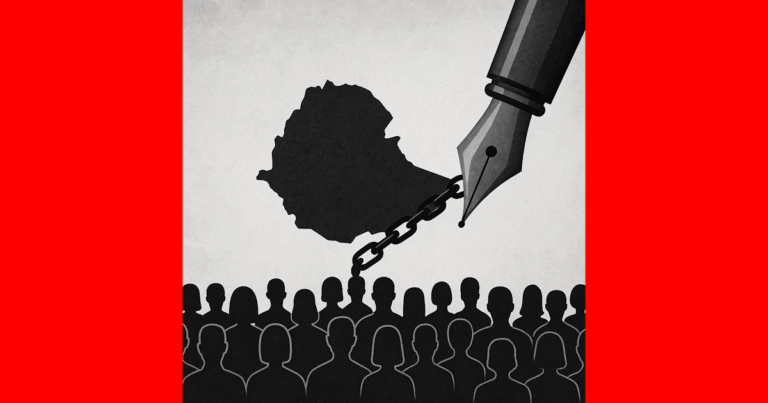
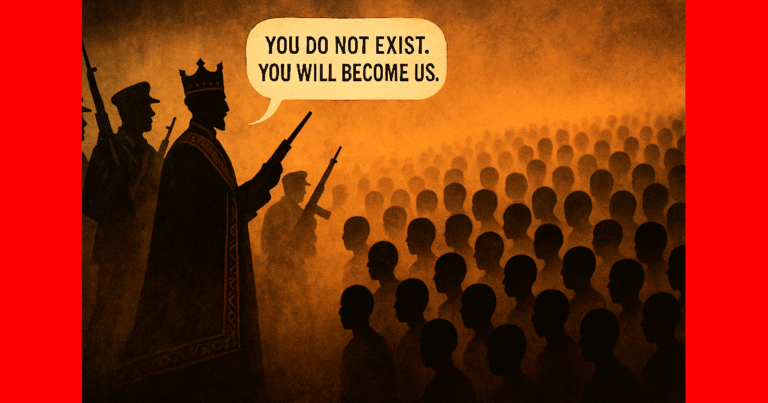
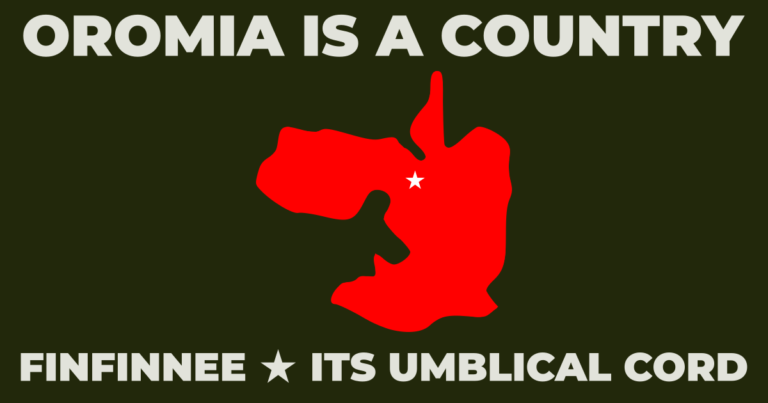
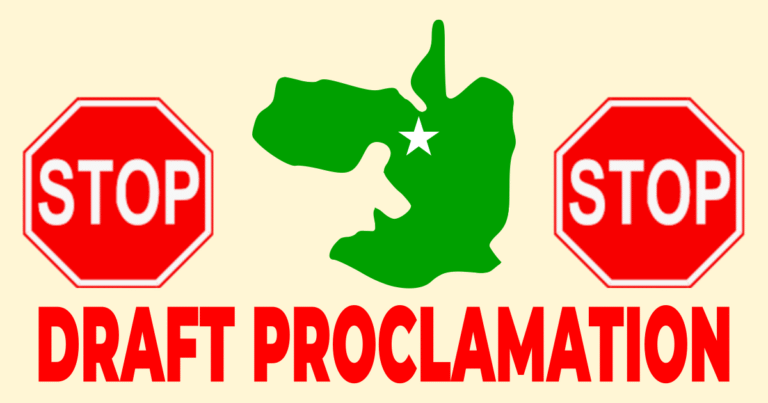
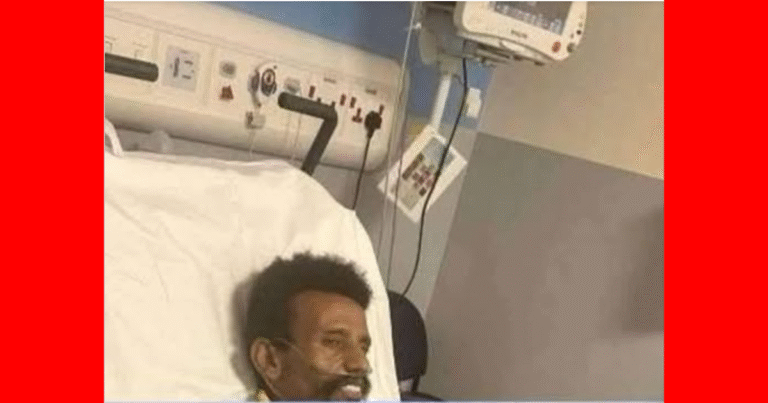
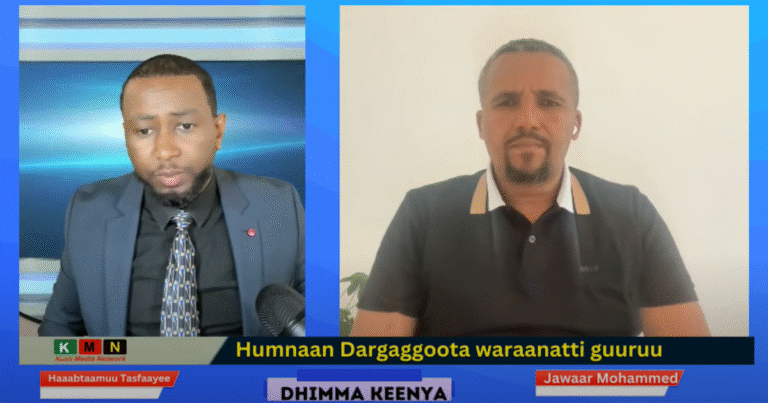
835797 989830of course like your web-site however you need to check the spelling on quite a few of your posts. A number of them are rife with spelling issues and I to find it very bothersome to inform the reality however I’ll surely come back again. 224997